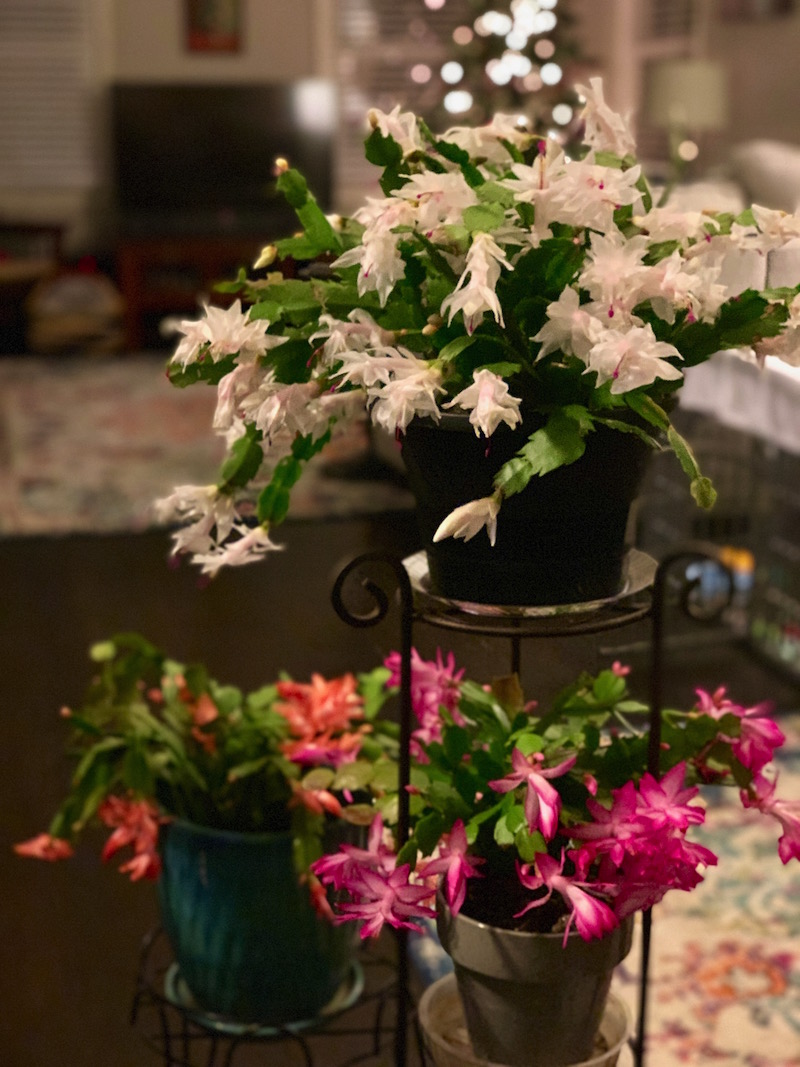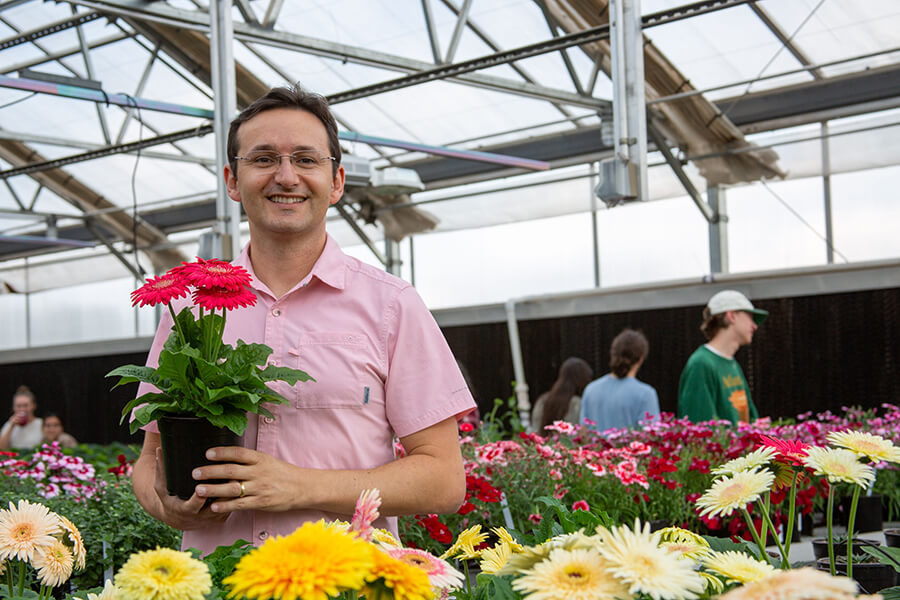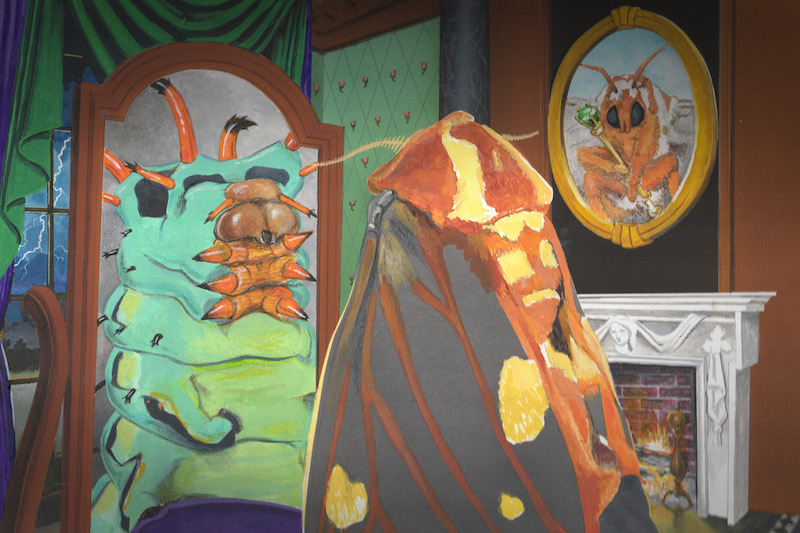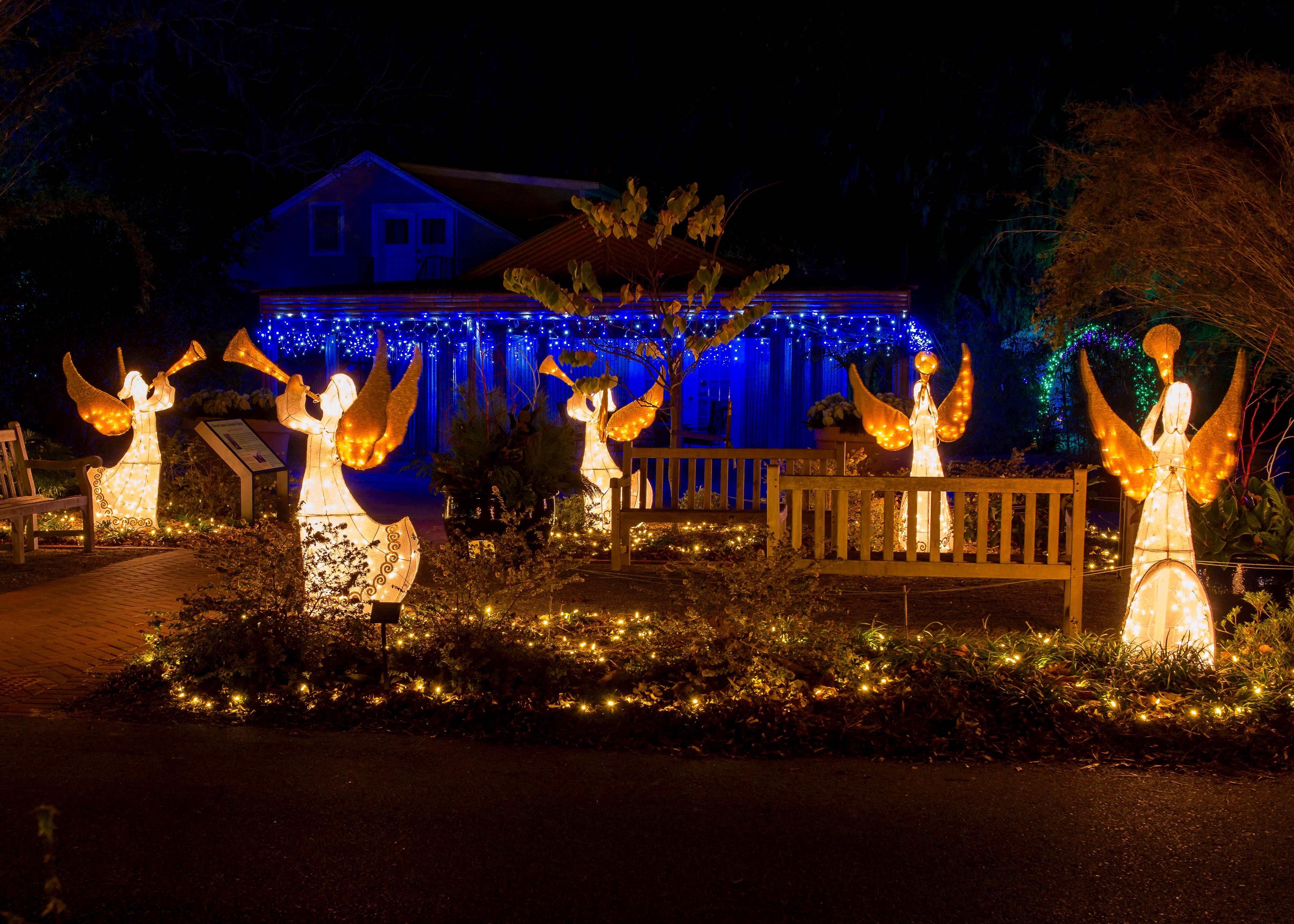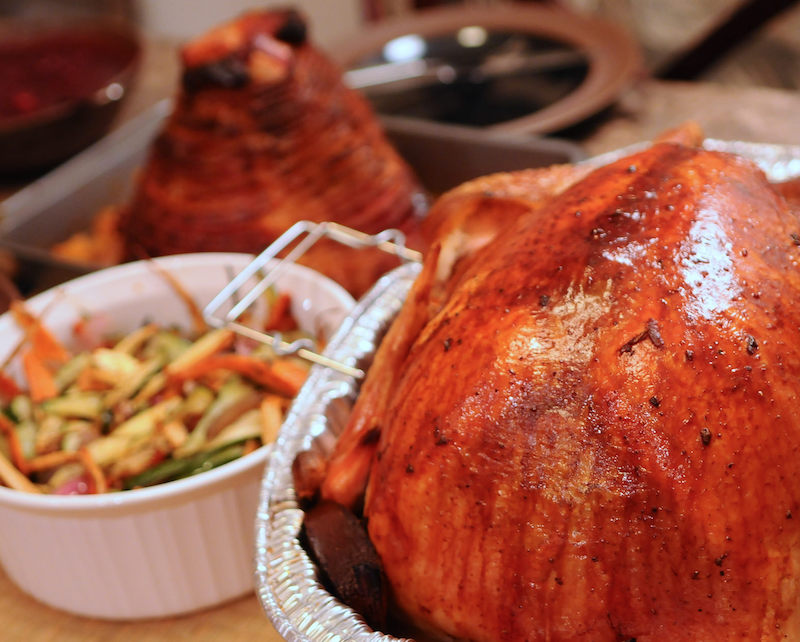December 21 officially marks the winter solstice, when areas in the Northern Hemisphere have the shortest day and the longest night of the year.
A few popular plants given as holiday gifts include Christmas cacti, poinsettias, kalanchoes and chrysanthemums — plants whose flowering is perfectly timed to the shorter days experienced this time of year.
In many plants, the initiation of flower buds depends upon the amount of daylight the plants receive. The plant response to day length is called "photoperiodism." Some plants will flower as day length gets shorter, while others flower as day length gets longer. Some plants are neutral, where day length does not influence flowering directly.
Christmas cacti are popular houseplants native to Brazil and are available in a wide variety of colors including red, rose, purple, lavender, peach, orange, cream and white. These species grow as epiphytes among tree branches in shady rain forests, and their cascading stems make them a great choice for hanging baskets. Flowering can last seven to eight weeks if the plants are kept at 68 degrees Fahrenheit.
Clients commonly call the University of Georgia Cooperative Extension office this time of year disappointed that their Christmas cacti or other short-day houseplants failed to bloom. They are often surprised to learn that if these plants are kept indoors year-round, their normal cycle of daylight exposure can be interrupted by artificial light inside the house. So, the challenge becomes trying to mimic normal daylight exposure with shorter days.
One option is to place these plants in a room with only natural light exposure near a window, ensuring that artificial lights stay off at night. Another option is to keep these plants outdoors as long as possible in the fall and then bring them indoors just before the threat of freezing temperatures. This usually means keeping most tropical houseplants outside until around the end of October in the Atlanta area. By this time, short-day plants are programmed to start forming flowers during the upcoming holidays.
I remember my grandfather keeping a Christmas cactus in a hanging basket on his porch all summer long and then bringing it inside just before the first freeze every year. It was an impressive plant with hundreds of flowers that would bloom between Thanksgiving and Christmas. I recall that he kept this plant going for almost a decade and it brought him many years of Christmas joy.
One of the great things about a Christmas cactus is that it doesn’t shed leaves like poinsettias or other houseplants. Note that there are no true leaves on Christmas cacti, so photosynthesis occurs within the green stem segments known as phylloclades. Pinch back the stems in early June to promote branching terminals for more flowers, and use stem pieces with three to five segments to root new plants.
The secret of good flower bud production on Christmas cacti during the fall involves temperature regulation and photoperiod (length of day and night) control. Fourteen hours or more of continuous darkness each night is required before flower bud set will occur.
Long nights should start around the middle of September and continue for at least six continuous weeks for complete bud set. Note that as little as two hours of interrupted lighting will inhibit flower bud set. Buds normally will be visible in about four weeks. The photoperiod has no effect on flowering once the buds are set.
Christmas cacti tolerate dry, slightly underwatered conditions during the spring and summer. Do not let the soil become waterlogged, especially during the long nights of winter. Following bud set in the fall, the soil must be kept evenly moist to prevent flower buds from falling off. Never let water stand in the saucer beneath the pot.
Fertilize plants monthly from the time new growth starts — in late winter or early spring — and throughout the summer using a one-half strength liquid fertilizer, such as 20-20-20 with trace elements. Christmas cacti have a higher requirement for magnesium than many plants. Fertilize monthly during the growing season with Epsom salts (magnesium sulfate) mixed at 1 teaspoon per gallon of water, but do not apply the same week as regular fertilizer. Stop fertilization during the late summer for greater flower bud production in the fall.
Follow these tips to enjoy your Christmas cactus for many years to come.

